I've posted bits and pieces of our Chestnut restoration project on other threads, but now that were finished, I figured I'd post a bit of a photo journal.
This canoe has some history. It's been all throughout the Northwest Territories, down the Mackenzie etc. About 30 years ago it took a fateful flight off a car and has been sitting in my uncle's (he's had the intent of restoring it himself) garage. This April my aunt decided that it's really time to get rid of it.
My wife and I were planning on building a strip canoe this summer, but with some coaxing and some arm twisting my dad and Uncle convinced us that this would be a really fun project instead. Knowing what what we do now, we probably would have gladly accepted and then used if for kindling, but despite the headaches we had a great time along the way, and I now that we're not in the thick of it anymore, I think both of us would have trouble passing up a distressed W/C canoe at the right price.
The canoe had some serious problems, some caused by hard use (e.g cracked and braced middle ribs, some caused by flying of a car (broken inwales), some caused by neglect (rotten decks), and several issues due to poor workmanship in the initial construction. I believe this is a later chestnut probably 60's or 70's, and man was it a dog. The last seven ribs on the stern end were out of plane with the rest of the boat. In the bow one of the ribs along the stem was bent about 2 inches off of center. The stem pieces were twisted and warped.
Though this was a "restoration" we decided not to do everything traditionally. Really the only places where we broke tradition was some of the materials, and the seat design. We used douglas fir for the rails and decks, figuring of all it's readily available out here in California, and that a boat should to some extent should reflect where it is made, that it is reasonably hard, light and strong. We'll see how it holds up... The seat design I credit to my Dad who picked it up from someone at the University of Wisconsin back in the day. He uses it in the strip canoes that he built and man are they comfortable. The curved fronts and backs really conform to your shape a lot better, not to mention seat height and angle are infinitely adjustable (a huge ASSET). To those of you working on canoes who aren't totally bent on tradition I highly recommend this technique.
It's been an adventure to say the least, including lots of visitors from the animal kingdom(baby barn owls, black widows, and snakes), and we'd both be lying if we said there weren't times we thought about burning up, but we're thrilled with the outcome. When we replaced the middle ribs, even though we did the one at a time we totally lost the shape of the boat and the hull was ridiculously lumpy. My dad and I thought we might be able to save it by wetting them and placing alot of weight on top (didn't really work) so we wound up cutting out the whole center section of the boat, recreating the shape with battons and starting over. We had some problems with cracking planking around the stems and bilges too. We're still having a few issues (see my thread "Temperamental Canvas"), but we took it out on the water last weekend and fell in love with it.
Here are a few (I guess you're only allowed to post 10. If you want more I'll give you a link to a larger web album)highlights from the project but we hope you enjoy them. And though we only discovered this forum a few weeks ago, thanks for the bits of help along the way! We've asked for a membership to WCHA for christmas!
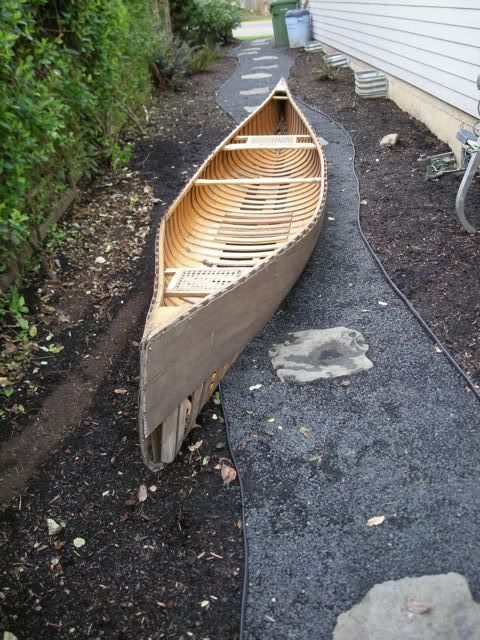
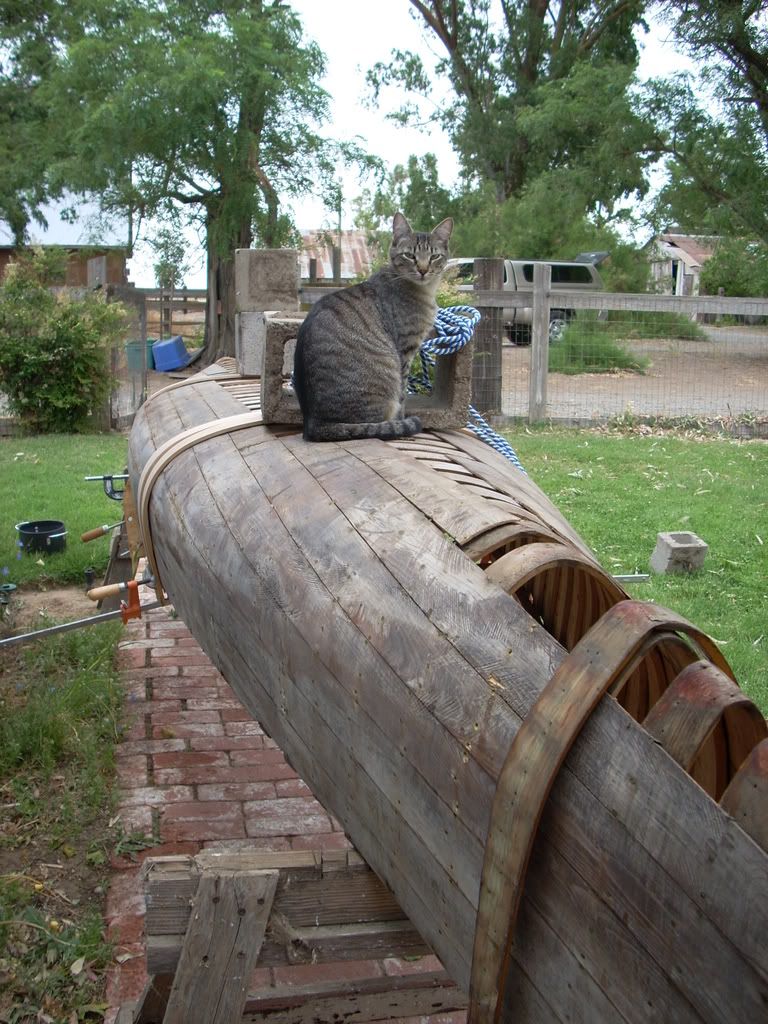
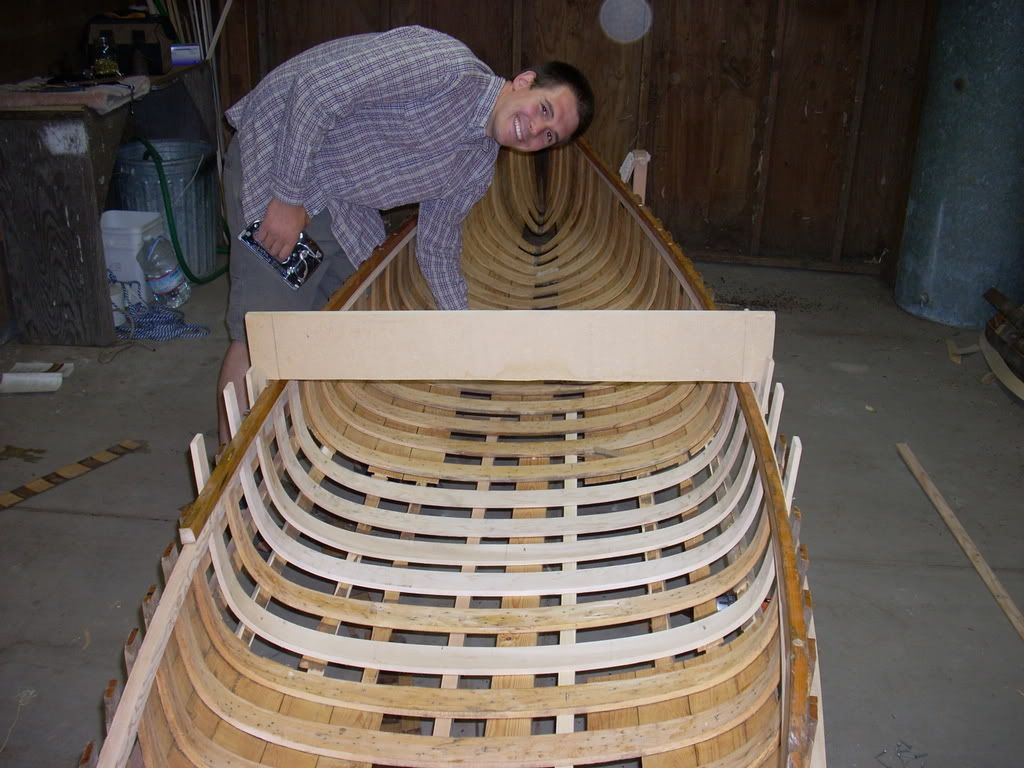
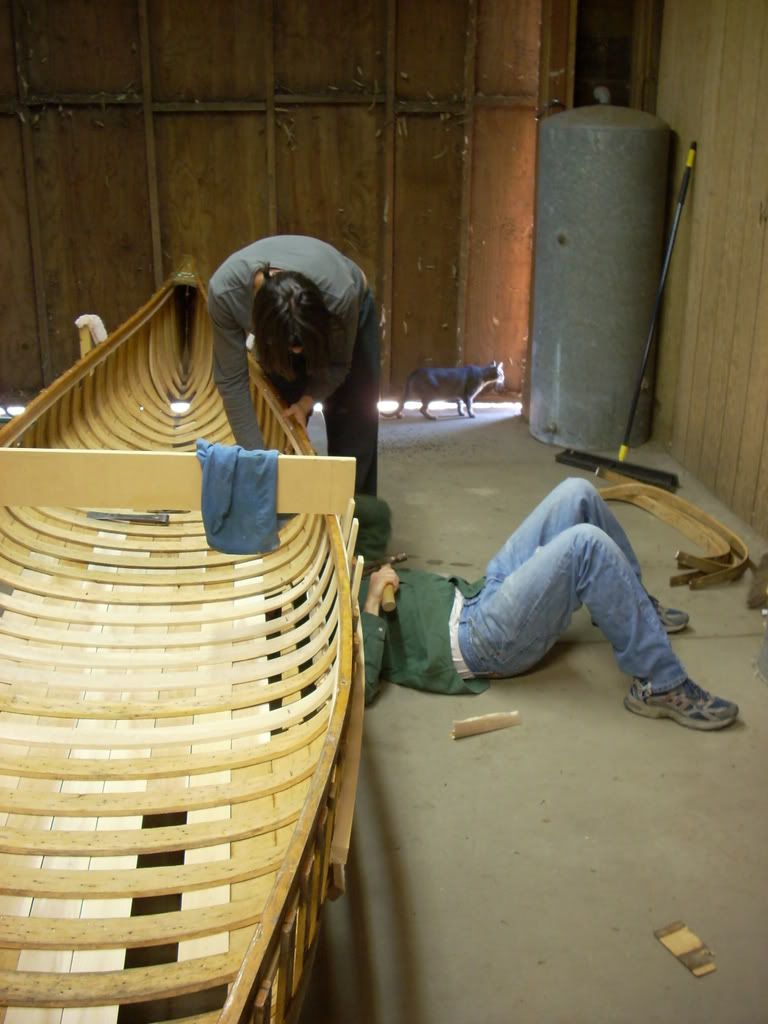

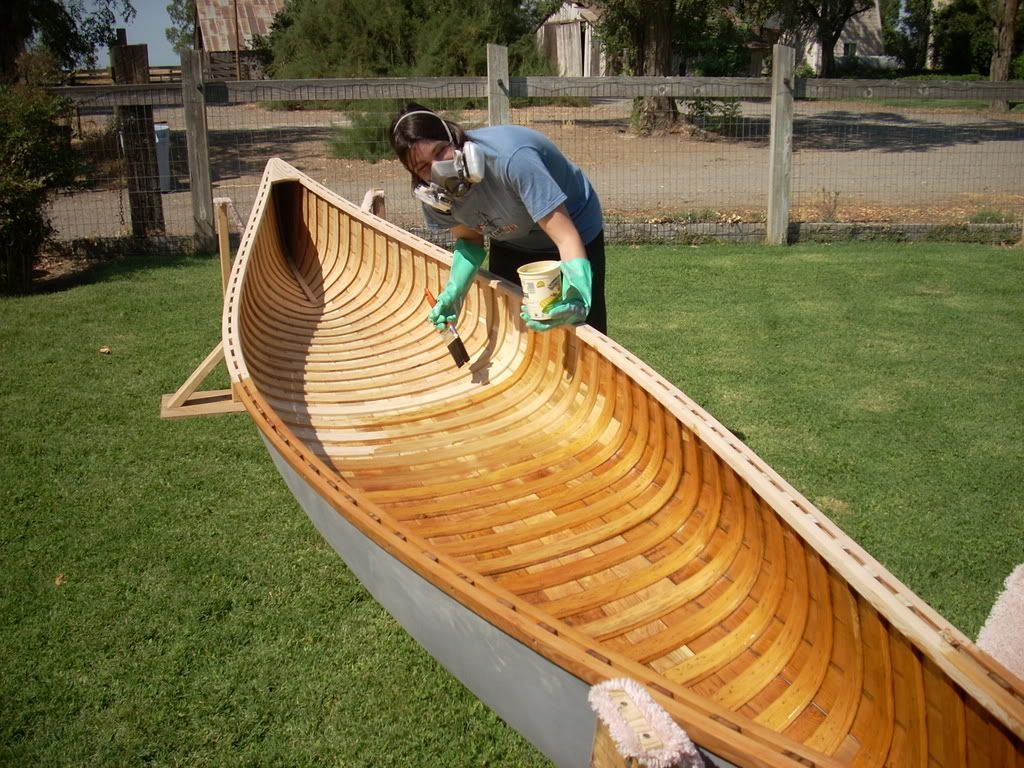
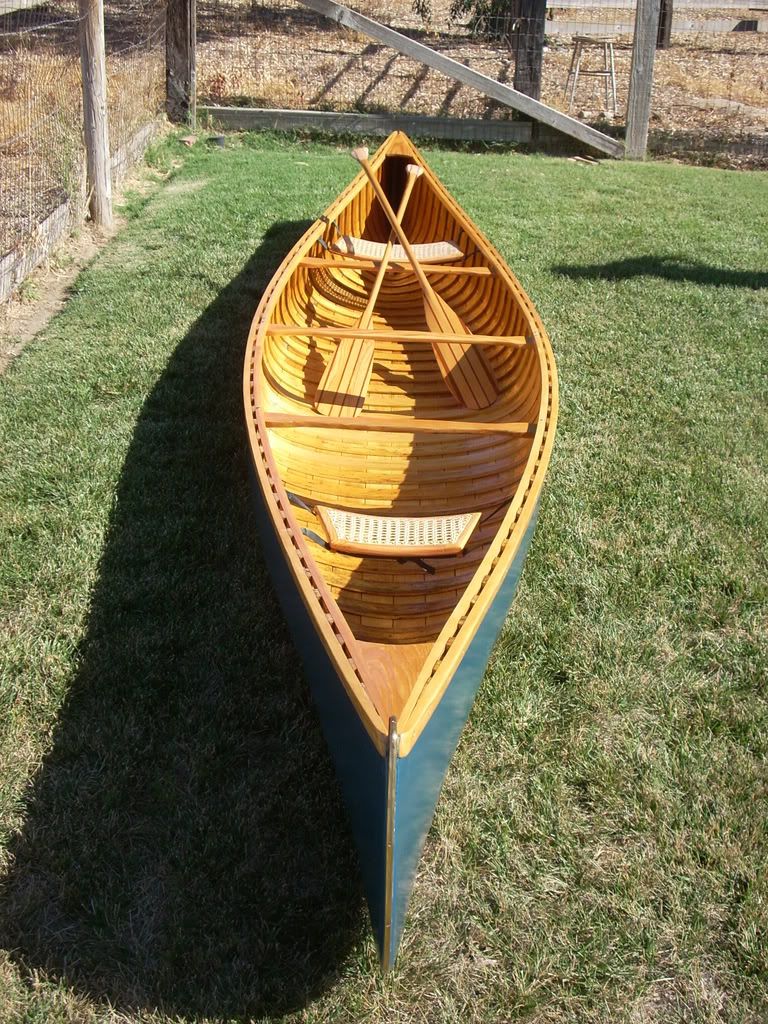
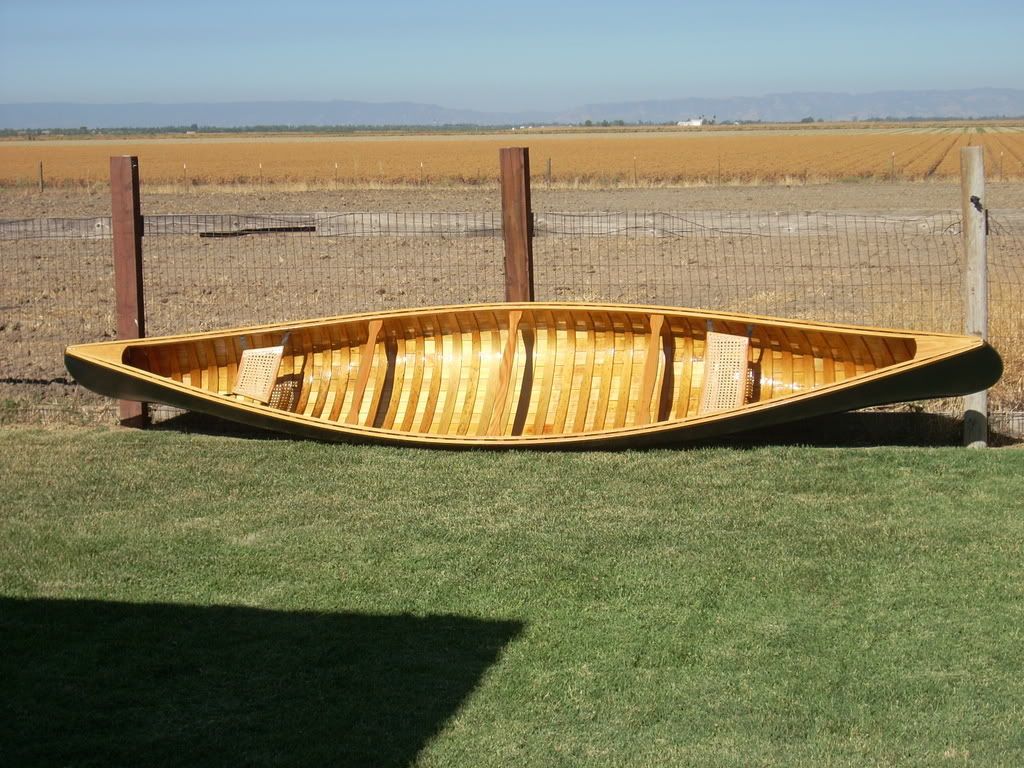


This canoe has some history. It's been all throughout the Northwest Territories, down the Mackenzie etc. About 30 years ago it took a fateful flight off a car and has been sitting in my uncle's (he's had the intent of restoring it himself) garage. This April my aunt decided that it's really time to get rid of it.
My wife and I were planning on building a strip canoe this summer, but with some coaxing and some arm twisting my dad and Uncle convinced us that this would be a really fun project instead. Knowing what what we do now, we probably would have gladly accepted and then used if for kindling, but despite the headaches we had a great time along the way, and I now that we're not in the thick of it anymore, I think both of us would have trouble passing up a distressed W/C canoe at the right price.
The canoe had some serious problems, some caused by hard use (e.g cracked and braced middle ribs, some caused by flying of a car (broken inwales), some caused by neglect (rotten decks), and several issues due to poor workmanship in the initial construction. I believe this is a later chestnut probably 60's or 70's, and man was it a dog. The last seven ribs on the stern end were out of plane with the rest of the boat. In the bow one of the ribs along the stem was bent about 2 inches off of center. The stem pieces were twisted and warped.
Though this was a "restoration" we decided not to do everything traditionally. Really the only places where we broke tradition was some of the materials, and the seat design. We used douglas fir for the rails and decks, figuring of all it's readily available out here in California, and that a boat should to some extent should reflect where it is made, that it is reasonably hard, light and strong. We'll see how it holds up... The seat design I credit to my Dad who picked it up from someone at the University of Wisconsin back in the day. He uses it in the strip canoes that he built and man are they comfortable. The curved fronts and backs really conform to your shape a lot better, not to mention seat height and angle are infinitely adjustable (a huge ASSET). To those of you working on canoes who aren't totally bent on tradition I highly recommend this technique.
It's been an adventure to say the least, including lots of visitors from the animal kingdom(baby barn owls, black widows, and snakes), and we'd both be lying if we said there weren't times we thought about burning up, but we're thrilled with the outcome. When we replaced the middle ribs, even though we did the one at a time we totally lost the shape of the boat and the hull was ridiculously lumpy. My dad and I thought we might be able to save it by wetting them and placing alot of weight on top (didn't really work) so we wound up cutting out the whole center section of the boat, recreating the shape with battons and starting over. We had some problems with cracking planking around the stems and bilges too. We're still having a few issues (see my thread "Temperamental Canvas"), but we took it out on the water last weekend and fell in love with it.
Here are a few (I guess you're only allowed to post 10. If you want more I'll give you a link to a larger web album)highlights from the project but we hope you enjoy them. And though we only discovered this forum a few weeks ago, thanks for the bits of help along the way! We've asked for a membership to WCHA for christmas!










Last edited:
